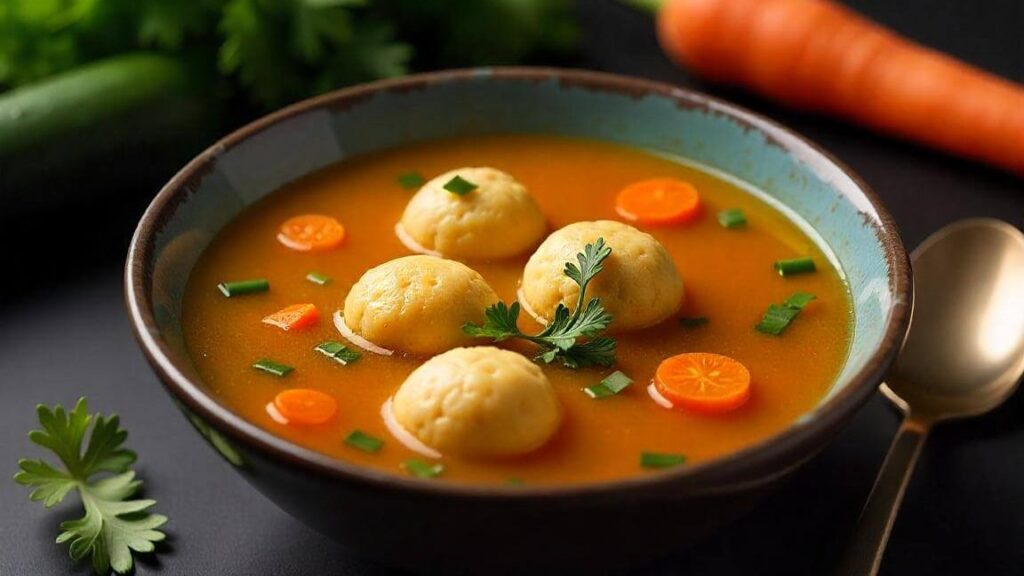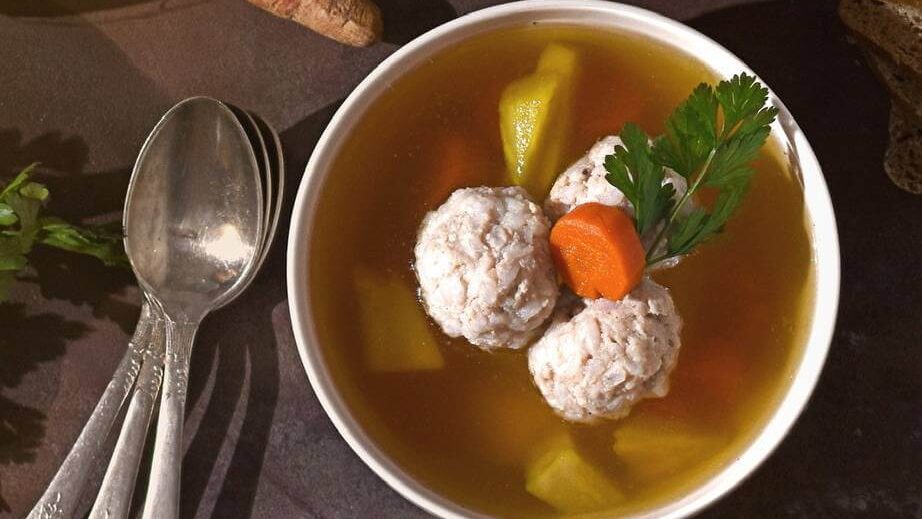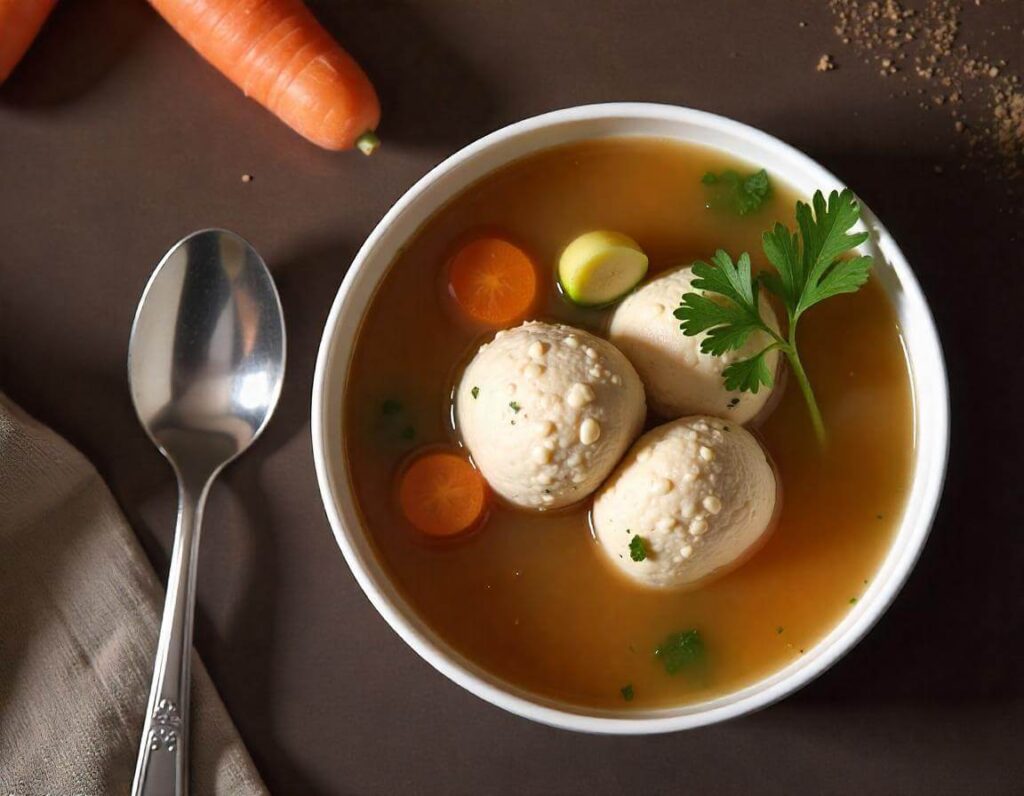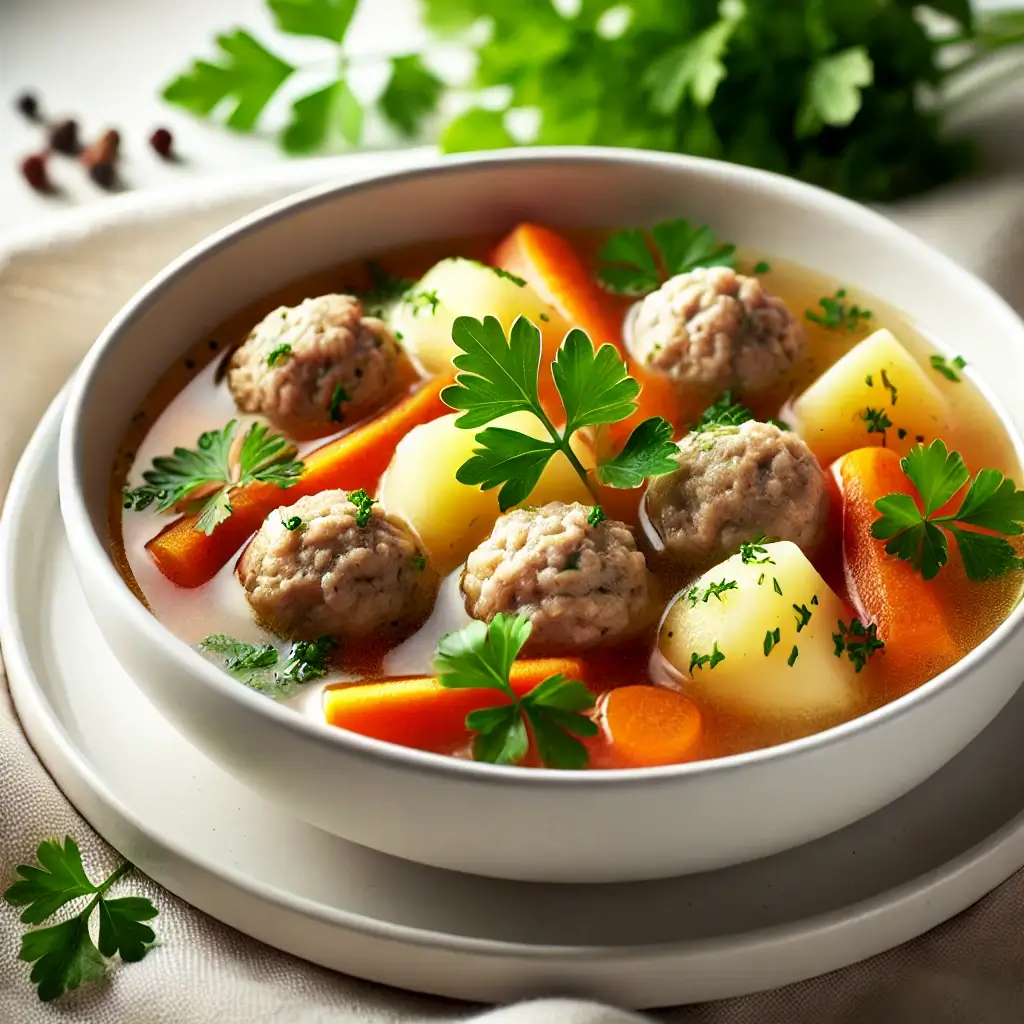Porcupine soup is not your everyday comfort food. It’s a dish that carries deep cultural roots, a bold flavor, and an air of mystery. Found in various indigenous cuisines around the world, this rare delicacy has been enjoyed for generations. It is often prepared as a special meal during traditional gatherings, survival cooking, or as part of medicinal food practices.
While some may raise an eyebrow at the idea of consuming porcupine meat, those who have tried it describe it as surprisingly tender and rich in flavor. In many regions, porcupine is considered a prized wild game meat, often cooked in stews or slow-simmered soups infused with herbs and spices. Whether you’re an adventurous foodie or simply curious about unique global dishes, porcupine soup is a culinary experience worth exploring.
In this post, we’ll dive into the origins of porcupine soup, its ingredients, health benefits, and where you can try it yourself. Are you set to indulge in a truly remarkable taste? Let’s begin!
What Is Porcupine Soup? A Unique Dish with Deep Roots

The Origins and Cultural Significance of Porcupine Soup
Porcupine soup has deep roots in various traditional cuisines across the world, especially in regions where wild game is a primary food source. This dish is often tied to the survivalist and resourceful cooking practices of indigenous peoples. Nothing goes to waste, and every animal plays a role in the culinary world. In many cultures, porcupine soup is prepared for special occasions or shared in community gatherings as a symbol of connection to nature and heritage.
The soup itself, often slow-cooked to tender perfection, is more than just a meal. It’s a connection to the past and a testament to the ingenuity of ancient food preservation methods. The origins of porcupine soup can be traced back to rural and remote areas. People rely on hunting and foraging to sustain themselves. In Africa, parts of Asia, and among Native American communities, porcupine has long been considered a valuable source of protein. It is not just a wild game delicacy.
Traditional Uses of Porcupine Meat in Indigenous Cuisine
In indigenous cuisines, porcupine meat holds a special place. Traditionally, it is used for more than just soups—it’s cooked in stews, roasted, or even dried for preservation. Depending on the region, people season the meat with a blend of local spices and herbs that elevate its naturally rich, earthy flavor. For example, in certain African cultures, porcupine pairs with hearty vegetables and root crops, creating a nourishing, filling dish that is both comforting and energizing.
In other parts of the world, particularly in rural areas where hunting is still common, porcupine meat might be one of the few sources of protein available to communities. Due to its unique texture and flavor, people often reserve it for ceremonial meals or special occasions. The meat is considered a delicacy because of its rarity and the skill required to hunt and prepare it.
Why Porcupine Soup Is Considered a Delicacy
While many may find porcupine meat unfamiliar, certain cultures consider it a delicacy due to its scarcity and rich taste. The rarity of the animal itself contributes to the perception of porcupine soup as a special dish, often enjoyed during celebratory events, festivals, or as a treat for guests.
Unlike more commonly consumed meats, porcupine has a distinctive flavor often compared to wild boar or rabbit—rich, hearty, and slightly gamey. This unique taste profile, combined with the labor-intensive preparation process, makes porcupine soup a treasured experience. The soup’s complexity also increases with the addition of local herbs and vegetables, creating a flavorful, nutrient-dense meal that goes beyond mere sustenance.
Because porcupine is not widely available in commercial markets, the dish is often seen as an “elite” food for those who can access it—either through hunting or in select specialty markets that carry exotic meats. Thus, porcupine soup is not only a rare culinary experience but a luxury for those lucky enough to taste it.
Ingredients and Preparation: What Goes into Porcupine Soup?

Key Ingredients Used in Traditional Recipes
Porcupine soup is a hearty and flavorful dish, built on simple but carefully chosen ingredients. The star of the show, of course, is the porcupine meat, but there are many other components that add depth to this unique soup.
Porcupine meat is typically simmered slowly, allowing its rich, slightly gamey flavor to infuse the broth. The meat itself is lean yet tender when cooked correctly, often cooked with bones to give the soup a fuller texture. Alongside the porcupine, root vegetables like potatoes, carrots, and sweet potatoes are commonly added, providing earthy sweetness and a hearty base for the dish.
Other typical additions include onions, garlic, and tomatoes, which help to create a rich, savory foundation. In some variations, leafy greens like spinach or kale are included, offering both nutritional benefits and a contrast in texture.
Herbs and Spices That Enhance the Flavor
The right combination of herbs and spices is crucial to transforming porcupine soup into a truly flavorful experience. In traditional recipes, you’ll often find a blend of spices like cumin, coriander, and cinnamon, which bring warmth and depth to the broth. Bay leaves and thyme are common herbs used in the soup, infusing the liquid with aromatic notes that complement the richness of the meat.
Chili peppers or paprika can also be added for those who enjoy a little heat, while fresh herbs like parsley or cilantro are sprinkled at the end of cooking to brighten the dish. These spices and herbs are key in highlighting the natural flavors of the porcupine meat while balancing its richness with fresh and vibrant notes.
The Role of Wild Game in Exotic Meat Dishes
In many cultures, wild game plays an important role in the culinary traditions, providing a unique and flavorful alternative to domesticated meats. Porcupine meat, in particular, is prized for its distinct taste and texture. It is leaner and tougher than conventional meats like beef or pork, but it becomes incredibly tender when cooked slowly in a stew or soup.
Because wild game is often more difficult to source, dishes like porcupine soup are treated as special delicacies, reserved for important occasions. The flavor profile of wild game meats adds complexity to exotic meat dishes, and porcupine, with its rich, earthy taste, serves as the perfect base for a flavorful soup that is sure to impress.
Step-by-Step Cooking Process
- Prepare the Meat: Start by cutting the porcupine into pieces, ensuring that any excess fat is removed. If you’re using the whole animal, you can roast or boil it first to tenderize the meat before making the soup.
- Sauté Vegetables: In a large pot, heat some oil and sauté onions, garlic, and spices to develop a rich, aromatic base.
- Simmer the Meat: Add the porcupine meat to the pot along with enough water or broth to cover the ingredients. Bring it to a boil and then reduce to a simmer, allowing the meat to tenderize and infuse the broth with its flavor.
- Add Vegetables: Once the meat is tender, add root vegetables like carrots, potatoes, or sweet potatoes. Continue simmering until the vegetables are soft and the flavors have melded together.
- Finishing Touches: Season the soup with salt, pepper, and additional herbs as needed. Serve the soup hot, garnished with fresh herbs like parsley or cilantro for added brightness.
Modern Twists on the Classic Porcupine Soup Recipe
While traditional porcupine soup recipes are cherished for their simplicity and authenticity, modern cooks are giving the dish a fresh spin by incorporating new ingredients or preparation methods. Some variations may include the addition of wild mushrooms or tomatoes, adding depth to the flavor profile. Others might experiment with a splash of wine or coconut milk, offering a new level of richness and complexity to the soup.
For those who want a quicker alternative, pressure cookers or slow cookers are becoming popular for cooking wild game soups. These devices help to tenderize the meat faster while allowing the flavors to meld together over several hours. Additionally, modern chefs may use herb-infused oils or smoked spices to elevate the soup’s aroma and taste, giving it a modern gourmet twist without sacrificing the traditional essence of this rare dish.
Health Benefits and Nutritional Value of Porcupine Soup

Nutritional Breakdown of Porcupine Meat
Porcupine meat is a highly nutritious and lean source of protein that offers a range of health benefits. Unlike commercially farmed meats like beef or pork, porcupine meat is typically lower in fat and higher in essential nutrients, making it a great alternative for those seeking leaner options.
Porcupine meat is rich in protein, which is vital for muscle growth, repair, and overall body function. It also provides a variety of vitamins and minerals, such as iron, which helps in the production of red blood cells, and zinc, which plays a key role in immune function and cell repair. Additionally, B vitamins, particularly B6 and B12, found in porcupine meat, are important for metabolism and energy production.
While porcupine meat is lean, it is packed with flavor, offering a dense, hearty texture that satisfies your appetite and provides lasting energy. If you’re looking to get a substantial protein boost without excess fat, porcupine meat is a great option.
How Porcupine Soup Supports a Healthy Diet
Porcupine soup not only provides a rich source of protein from the meat but also includes nutrient-dense vegetables and herbs that enhance its health benefits. The vegetables commonly used in porcupine soup, such as carrots, potatoes, and sweet potatoes, are high in fiber, which aids digestion and helps maintain healthy blood sugar levels. These vegetables also provide antioxidants, such as vitamin A and C, which are essential for immune function and skin health.
The herbs and spices used in porcupine soup also contribute to its nutritional profile. Ingredients like garlic and onions are known for their immune-boosting properties and their ability to reduce inflammation in the body. Many of the spices, like turmeric and cumin, also have anti-inflammatory and digestive benefits.
Additionally, since porcupine soup is often cooked slowly, it retains much of the nutrients from both the meat and the vegetables. The broth is rich in minerals, helping to keep you hydrated and providing a comforting, healing food for the body. This makes porcupine soup an excellent choice for those looking to support a healthy, balanced diet.
Sustainability and Ethical Considerations in Consuming Wild Game
One of the significant benefits of consuming wild game like porcupine is its potential for sustainability. Unlike industrial meat production, it often causes overgrazing, habitat destruction, and a high carbon footprint. Wild game is typically hunted in a manner that causes minimal environmental impact. In many cases, hunting is regulated to ensure that wildlife populations remain balanced and healthy. This makes wild game a more eco-friendly option compared to mass farming practices.
Ethical considerations come into play when consuming any wild animal. It’s important to source porcupine meat responsibly. Ensure that hunting is done in a sustainable and humane manner. Ethical hunters practice fair chase. They adhere to local laws and regulations that protect wildlife populations. By purchasing meat from these regulated sources or hunting it yourself, you can help contribute to the conservation of natural habitats and wildlife.
Additionally, many who consume wild game, including porcupine, value the connection to nature that comes with foraging and hunting. The meat often comes from animals that are living in their natural environments. These animals are not confined to industrial farms. As such, the ethical implications of consuming wild game are tied to respect for wildlife and the environment. This makes wild game a more conscious choice for those interested in sustainability and ethical eating practices.
Where to Try or Make Porcupine Soup

Countries and Regions Where Porcupine Soup Is Common
Porcupine soup is a rare delicacy, but you can find it in various parts of the world. It is particularly common in regions where wild game is a traditional part of the diet. One of the primary areas where people consume porcupine meat is Africa, specifically in countries like Cameroon and the Democratic Republic of Congo. There, locals consider it a delicacy and often serve it on special occasions.
In Southeast Asia, people also consume wild game meats like porcupine, especially in rural areas where hunting is more common. In countries such as Thailand and Vietnam, wild animals frequently appear in the local culinary landscape. Chefs prepare porcupine soup using regional spices and herbs, creating a unique flavor profile.
In parts of North America, particularly among Indigenous groups, people have used porcupine meat for centuries. Some Indigenous communities still prepare porcupine soup as part of their heritage. They draw on ancient recipes and techniques passed down through generations. These regions tend to have a deep respect for nature and wildlife, where hunting for food is often done sustainably and ethically.
Though it’s not as widespread as other meats, porcupine soup offers a taste of local culture, history, and tradition. In these regions where it remains a cherished dish, it connects people to their past and their surroundings.
Best Restaurants and Local Markets That Serve Porcupine Soup
If you’re looking to try porcupine soup, you may have to venture off the beaten path. It’s not typically served in mainstream restaurants. However, there are several places where this rare dish is still celebrated.
In Cameroon and other central African countries, local restaurants that specialize in wild game often feature porcupine meat on the menu. These establishments may serve porcupine in various forms, including in soup, stews, or grilled. Many of these restaurants use traditional methods of cooking. They rely on slow-cooked broths and locally sourced vegetables to make their version of porcupine soup.
If you’re traveling through Southeast Asia, look for local markets or specialty restaurants that cater to adventurous eaters. In countries like Vietnam, porcupine meat might be sold in open-air markets, where you can purchase it fresh and have it cooked on-site. In Thailand, certain high-end ethnic restaurants may feature wild game dishes like porcupine soup. These dishes are part of a broader menu dedicated to exotic meats.
As porcupine soup is not common in most mainstream eateries, you can often find it in ethnic or specialty restaurants. It’s also available in local markets. Whether you’re hunting for it on your travels or looking for a new culinary experience, these are the best places to enjoy this unique dish.
How to Source Porcupine Meat for Home Cooking
If you’re feeling adventurous and want to make porcupine soup at home, sourcing the meat can be tricky. Porcupines aren’t typically sold in grocery stores. However, there are several ways to obtain it for home cooking.
- Specialty Butchers: In some areas, especially in regions where wild game hunting is popular, local butchers may carry exotic meats, including porcupine. If you live in a wildlife-rich area, check with your nearest butcher to see if they can order it for you.
- Wild Game Suppliers: There are specialty suppliers that focus on wild game meat, and some may carry porcupine meat. Online wild game markets may also offer porcupine meat, shipped frozen to your location. Be sure to choose a reputable supplier to ensure the meat is ethically sourced.
- Hunting and Foraging: If you’re an experienced hunter, obtaining porcupine meat directly through hunting is another option. Depending on your location, there may be hunting seasons and regulations that allow you to hunt porcupines legally. Always ensure you are following local wildlife laws to ensure sustainability and ethics.
- Ethnic Markets: In areas with significant African, Asian, or Indigenous populations, ethnic markets may carry wild game meats, including porcupine, either fresh or frozen. It’s worth checking these markets to see if porcupine meat is available for your culinary endeavors.
Whether you’re purchasing from a butcher, hunting it yourself, or sourcing it online, ensure that the porcupine meat is ethically sourced and complies with local hunting regulations. Once you have it, you’re all set to start making your very own porcupine soup!
Look at this
Check out these recipes
Final Thoughts: Should You Try Porcupine Soup?
The Experience of Eating Exotic Foods
Trying porcupine soup is more than just about tasting something new. It’s about embracing a unique cultural experience. For food enthusiasts and adventurers, seeking out exotic dishes like porcupine soup offers an opportunity to step outside the ordinary. It lets you explore the culinary traditions of different regions. The process of tasting something so uncommon connects you with history, culture, and lifestyle. It links you to those who have been preparing and enjoying this dish for generations.
Porcupine meat, with its distinct flavor and texture, adds an adventurous twist to your culinary journey. Whether you’re a fan of wild game or simply curious about trying something rare, porcupine soup provides a chance to expand your food horizons. It offers the opportunity to try a dish that not many people have had the chance to taste. It’s an experience that may surprise you, challenge your taste buds, and give you a story to tell at the dinner table.
Things to Consider Before Trying Porcupine Soup
While trying porcupine soup may be exciting, there are a few important factors to consider before diving into this exotic dish.
- Ethical Sourcing: Ensure you source the porcupine meat ethically. Hunt wild game responsibly, respecting local wildlife regulations and conservation practices. Whether you buy it from a market or hunt it yourself, make sure it’s obtained sustainably.
- Health Considerations: Wild meat carries health risks, especially if you prepare or store it improperly. Always handle the meat correctly. This helps avoid foodborne illnesses. If you’re unfamiliar with wild meats, consult experts. You can also follow trusted recipes for safe preparation.
- Cultural Sensitivity: Porcupine soup is a dish that holds cultural significance in many regions, and it’s important to approach it with respect. Understanding the history and tradition behind the dish can deepen your appreciation and enhance the experience.
Trying something as exotic as porcupine soup can be an exciting and unforgettable experience. However, it’s essential to take these considerations into account. This ensures that you’re making an informed decision.
Exploring Other Rare Culinary Delights
If porcupine soup piques your interest, you might want to explore other rare and exotic dishes around the world. There are countless culinary adventures waiting to be had, and each one offers a unique taste of different cultures.
- Fugu (Japan): This dish, made from pufferfish, is both a delicacy and a risk, as it contains potent toxins if not prepared correctly. Trying fugu is a thrilling experience that requires a licensed chef to prepare it safely.
- Casu Marzu (Italy): Known as “maggot cheese,” this Sardinian delicacy is made from fermented cheese that contains live insect larvae. It’s a controversial and rare treat for the daring.
- Balut (Philippines): A fertilized duck egg, cooked and eaten in its shell, offers a unique texture and flavor experience. It’s a popular snack among locals, but can be quite an adventure for first-timers.
Exploring rare culinary delights is a journey for the brave and curious. If you find porcupine soup fascinating, there’s a whole world of exotic foods to discover. Who knows? You may uncover your new favorite dish in the process!
Is Porcupine Soup Worth the Try?
In conclusion, porcupine soup is not just a meal. It’s an adventure. From its deep cultural roots to the bold, rich flavors that come with it, trying this dish is an experience. It goes beyond just eating something new. Whether you’re a food enthusiast or simply curious, porcupine soup offers something unique. It provides an authentic taste of a rare culinary practice.
Of course, as with any exotic dish, it’s important to consider the ethical and health aspects before diving in. Source the meat responsibly. Ensure it’s properly prepared. Understand the cultural significance of the dish. This will make your experience more meaningful.
If you find the idea of porcupine soup intriguing, you’re just scratching the surface of the world of exotic foods. There are countless other rare and exciting dishes waiting for the brave and adventurous to try. The next time you’re looking to break away from the ordinary, try something new. Don’t hesitate to give porcupine soup a try. After all, the best culinary journeys start with a little bit of courage and a lot of curiosity.
